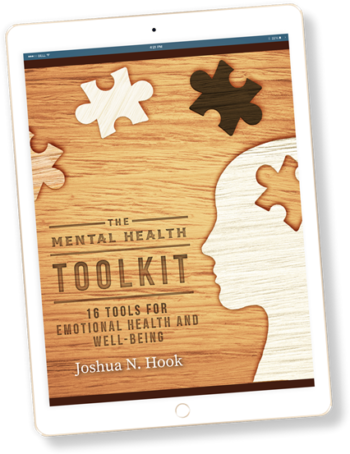How to Use the Enneagram for Personal Growth
May 20, 2020
Categories: Enneagram
One of the things I’ve been thinking about lately is how to use the Enneagram as a tool in counseling, coaching, and personal growth. It has been incredibly helpful in my own work, and I’d like to lay out a model for how the Enneagram can be integrated into any personal growth process.
Steps of Counseling/Personal Growth
There are a lot of different types of counseling and personal growth strategies, but there are also some commonalities across theories and techniques. For example, most strategies involve the following steps (although they may focus more on one step vs. another):
- Problem: Realization or recognition that something in your life isn’t working and you want to change it.
- Insight: Deeper understanding about the problem and where it came from (e.g., biological factors, family upbringing, cultural factors). In other words, how did the problematic thoughts, behaviors, or patterns come “on-line?”
- Awareness: Ability to “catch yourself” engaging in the problematic thoughts, behaviors, or patterns as they happen.
- Plan: Goal (or set of goals) that will get you to where you want to go.
- Change: Practical strategies for making changes in your thoughts, behaviors, or patterns.
I believe the Enneagram can serve as a helpful tool for all of the steps, but perhaps especially the beginning steps.
Step 1: Problem
Some people have a difficult time naming or identifying their problematic thoughts, behaviors, or patterns. The Enneagram can help with this process. Once you identify your number, there are some common difficulties or struggles associated with each number. It isn’t all-encompassing, but people usually can see some connections between the problems they are experiencing in their lives and the common struggles of their number. The Enneagram can help give people language to describe their problem.
Step 2: Insight
The Enneagram gives an elegant explanation for why people develop problematic patterns of thinking and behavior. From a young age, people see the world in a particular manner and engage the world in certain ways to get their needs met. People’s strategies likely develop from a mix of genetic and environmental factors. Over time, these strategies “harden” and people begin to engage the world in rigid ways, which aren’t always effective. Often people can see connections between their problems, their rigid ways of engaging the world, and the tendencies of their Enneagram number.
Step 3: Awareness
Importantly, the main point of the Enneagram isn’t just to understand yourself and others better (although it helps with that). The key to personal and spiritual growth is that once you understand your personality and your tendencies, you can “catch yourself” acting out of your number. You can’t change what you aren’t aware of. At this point in therapy or personal work, it can be helpful to bring in mindfulness techniques to help individuals grow in their awareness of their internal world (e.g., thoughts, feelings, motivations).
Step 4: Plan
The Enneagram provides guidelines for some of the steps each number can take in order to be healthier. There are healthy and unhealthy dimensions of each number. The Enneagram is also dynamic—the connections between the numbers represent movement that individuals can go when they are in a safe, secure place. For example, my number, the 6, often acts like a healthy 9 when they are feeling secure. Each person is different of course, so there isn’t a rigid prescription for every number. But understanding the Enneagram in a deeper way can offer some ideas for next steps in personal growth.
Step 5: Change
The Enneagram doesn’t necessarily lay out best practices for making concrete changes in your life. But we have a pretty good sense of how people can change from research in psychology. In my own work, I have used a model called the 5 S’s of behavior change. It involves 5 steps, and they all start with the letter S.
- Adjust thesurroundings. Make your environment work for you, not against you.
- Start small. Don’t bite off more than you can chew. Start with a small change at first, get some success, and then slowly work up from there.
- Be specific. Don’t make broad, ill-defined goals. Be very clear and specific about what you are trying to do, and what would constitute success.
- Schedule it in. Research has found that it takes about 66 days of trying to change something before it starts to feel natural. So, for the first 2-3 months, schedule the change like you would an appointment on your calendar.
- Find a support team. You can’t change by yourself. Find a group of people to help support you and keep you accountable.
Discussion
How have you found the Enneagram to be helpful in therapy or your own personal growth process?

Related Thoughts

Subscribe To My Newsletter
Join my mailing list to receive the latest blog posts.
Receive my e-book “The Mental Health Toolkit” for free when you subscribe.





